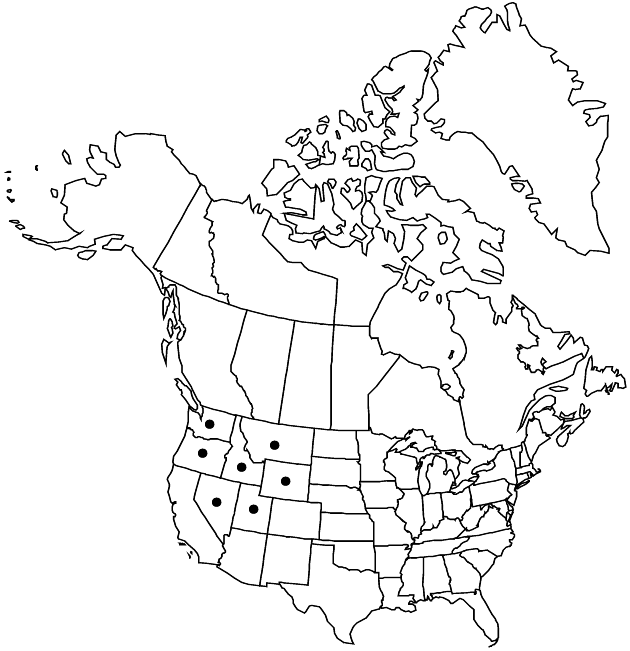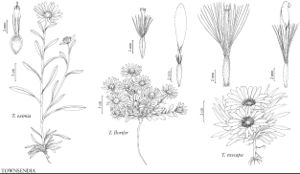Townsendia florifer
Proc. Amer. Acad. Arts 16: 84. 1880.
Biennials (perhaps flowering first year, sometimes persisting), 3–12(–15+) cm. Stems decumbent to erect; internodes 3–12(–15+) mm, piloso-strigose. Leaves basal and cauline, blades spatulate to linear, 10–25(–50+) × 2–3(–8+) mm, not fleshy, faces ± strigose. Heads at tips of stems. Involucres ± hemispheric or broader, 16–20(–30) mm diam. Phyllaries 24–30+ in 3–4+ series, the longer ± lanceolate, (6–)9–11+ mm (l/w = 2.5–5), apices acute, abaxial faces strigose. Ray florets 13–34+; corollas white or pinkish adaxially, laminae (8–)10–18+ mm, abaxially usually glandular-puberulent, rarely glabrous. Disc florets (80–)100–150+; corollas (4–)5.5–6+ mm. Cypselae (3.5–)4–5+ mm, faces hairy, hair tips entire or forked; pappi persistent; on ray cypselae 20–30 subulate to setiform scales 2–6 mm; on disc cypselae 20–30+ subulate to setiform scales (4–)5–7+ mm. 2n = 18.
Phenology: Flowering Apr–Jun(–Aug).
Habitat: Gravelly flats with junipers and sagebrush
Elevation: 400–2300 m
Distribution

Idaho, Mont., Nev., Oreg., Utah, Wash., Wyo.
Discussion
J. H. Beaman (1957) considered plants intermediate between Townsendia florifer and T. parryi to be hybrids. Such intermediates occur in Montana (e.g., Jones in 1905 from Gallatin Co. and Suksdorf 282 from Park Co.), outside the known distribution of T. florifer.
Selected References
None.
